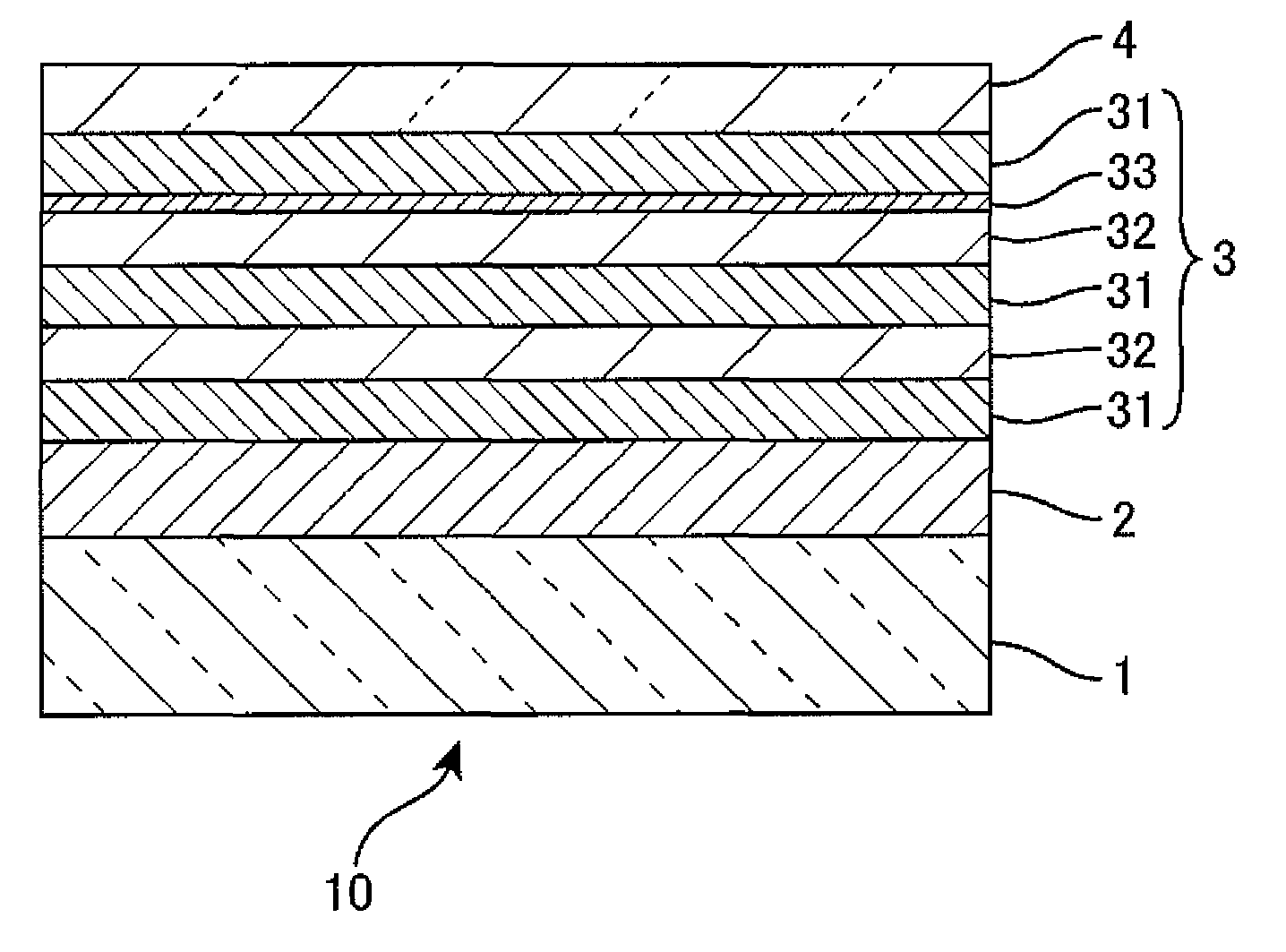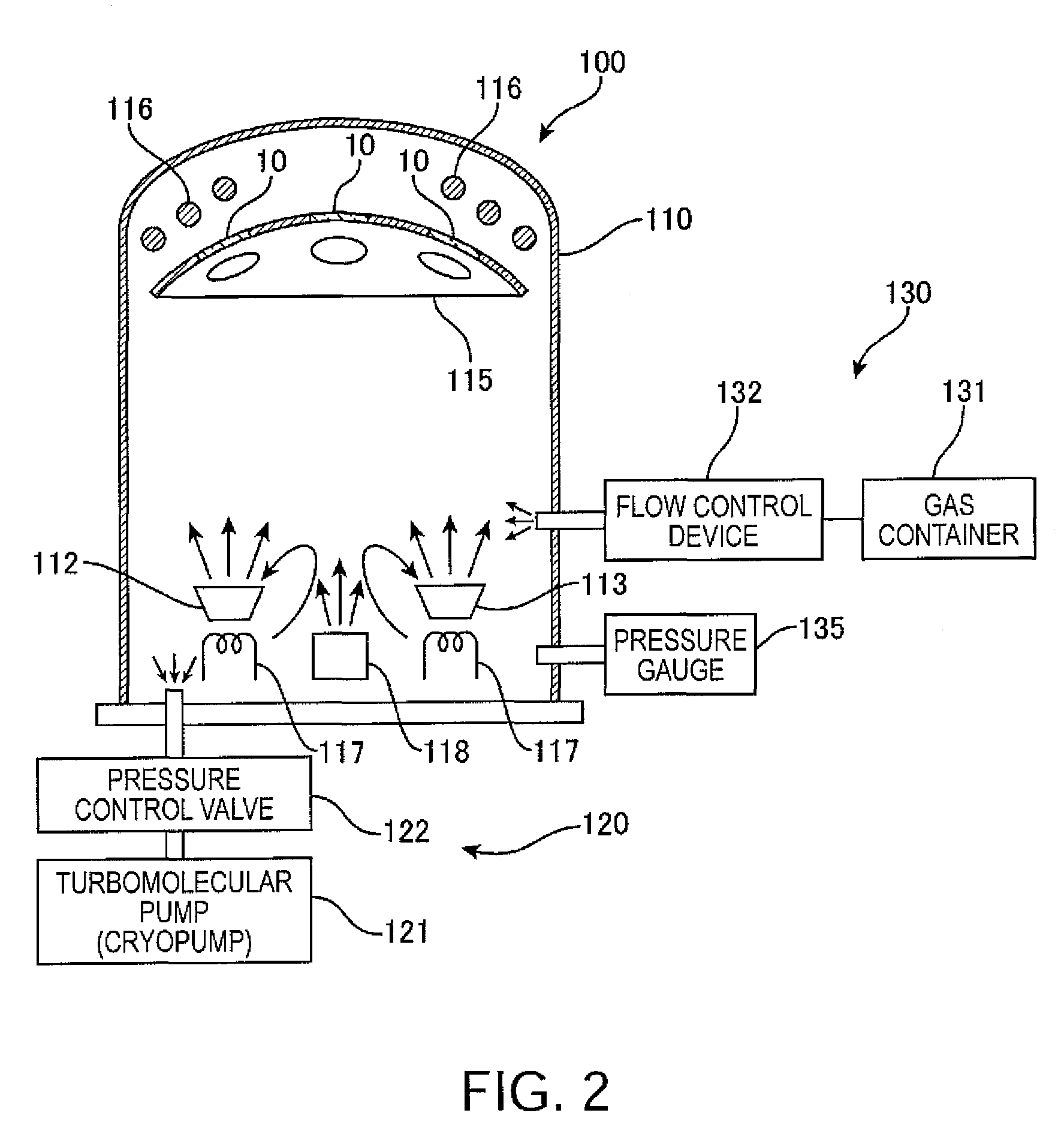Optical article and method for producing the same
a technology of optical articles and optical sheets, applied in the field of optical articles, can solve the problems of film separation, poor adhesion of gold, and concern for the durability of the antireflection layer that includes the ito layer, and achieve the effects of low resistance, excellent compatibility, and low sheet resistan
- Summary
- Abstract
- Description
- Claims
- Application Information
AI Technical Summary
Benefits of technology
Problems solved by technology
Method used
Image
Examples
example 1
2.1 Example 1
Sample S1
2.1.1 Selection of Lens Substrate and Formation of Hard Coating Layer
[0056]A coating liquid for forming a hard coating layer 2 was prepared as follows. First, 4.46 parts by weight of acid anhydride curing agent (trade name: liquid curing agent (C2) (manufactured by Arakawa Chemical Industries)) was mixed with 20 parts by weight of epoxy resin / silica hybrid (trade name: Compoceran E102 (manufactured by Arakawa Chemical Industries)), and stirred to give a coating liquid. The obtained coating liquid was applied onto a substrate 1 using a spin coater to a predetermined thickness, thereby forming a hard coating layer 2.
[0057]As the substrate 1, a plastic lens substrate for spectacles having a refractive index of 1.67 (manufactured by SEIKO EPSON, trade name: Seiko Super Sovereign (SSV)) was used. The coated lens substrate was calcined at 125° C. for 2 hours.
2.1.2 Formation of Antireflection Layer
2.1.2.1 Deposition Apparatus
[0058]Subsequently, an inorganic antireflec...
example 2
2.2 Example 2
Sample S2
[0073]Using the same lens substrate 1 as above, a hard coating layer 2 was formed under the same conditions, and an antireflection layer 3 of type A1 was formed on the surface thereof, thereby giving a sample S2. Low-refractive-index layers 31 and high-refractive-index layers 32 were formed under the same conditions as in Example 1 (2.1.2.2). However, in the formation of a silicide layer (fifth layer) 33, a TiSi compound was employed as a deposition source, and the silicide layer 33 was formed by non-ion-assisted vacuum deposition. The silicide layer 33 of the sample 52 was formed to a thickness of 1 nm. After forming the antireflection layer 3, an antifouling layer 4 was formed in the same manner as in Example 1 (see 2.1.3).
example 3
3.1 Example 3
Sample S3
[0091]Using a cover glass as the lens substrate 1, an antireflection layer 3 was formed on the surface thereof, thereby giving a sample S3 of Example 3. The cover glass sample (glass sample) S3 has a transparent clear glass (B270) as the optical substrate 1, and the antireflection layer 3 was formed directly on the optical substrate 1 without forming a hard coating layer. The antireflection layer has the six-layer structure of type A1. That is, the first layer, the third layer, and the sixth layer are low-refractive-index layers 31 of SiO2, the second layer and the fourth layer are high-refractive-index layers 32 of ZrO2, and the fifth layer is a silicide layer 33. The low-refractive-index layers 31 of SiO2 and the high-refractive-index layers 32 of ZrO2 were formed under the same conditions as in Example 1 (2.1.2.2). Meanwhile, the silicide layer 33 was formed under the same conditions as in Example 2 (2.2). The glass sample S3 thus has the antireflection laye...
PUM
| Property | Measurement | Unit |
|---|---|---|
| resistivity | aaaaa | aaaaa |
| refractive index | aaaaa | aaaaa |
| temperature | aaaaa | aaaaa |
Abstract
Description
Claims
Application Information
 Login to View More
Login to View More - R&D
- Intellectual Property
- Life Sciences
- Materials
- Tech Scout
- Unparalleled Data Quality
- Higher Quality Content
- 60% Fewer Hallucinations
Browse by: Latest US Patents, China's latest patents, Technical Efficacy Thesaurus, Application Domain, Technology Topic, Popular Technical Reports.
© 2025 PatSnap. All rights reserved.Legal|Privacy policy|Modern Slavery Act Transparency Statement|Sitemap|About US| Contact US: help@patsnap.com



